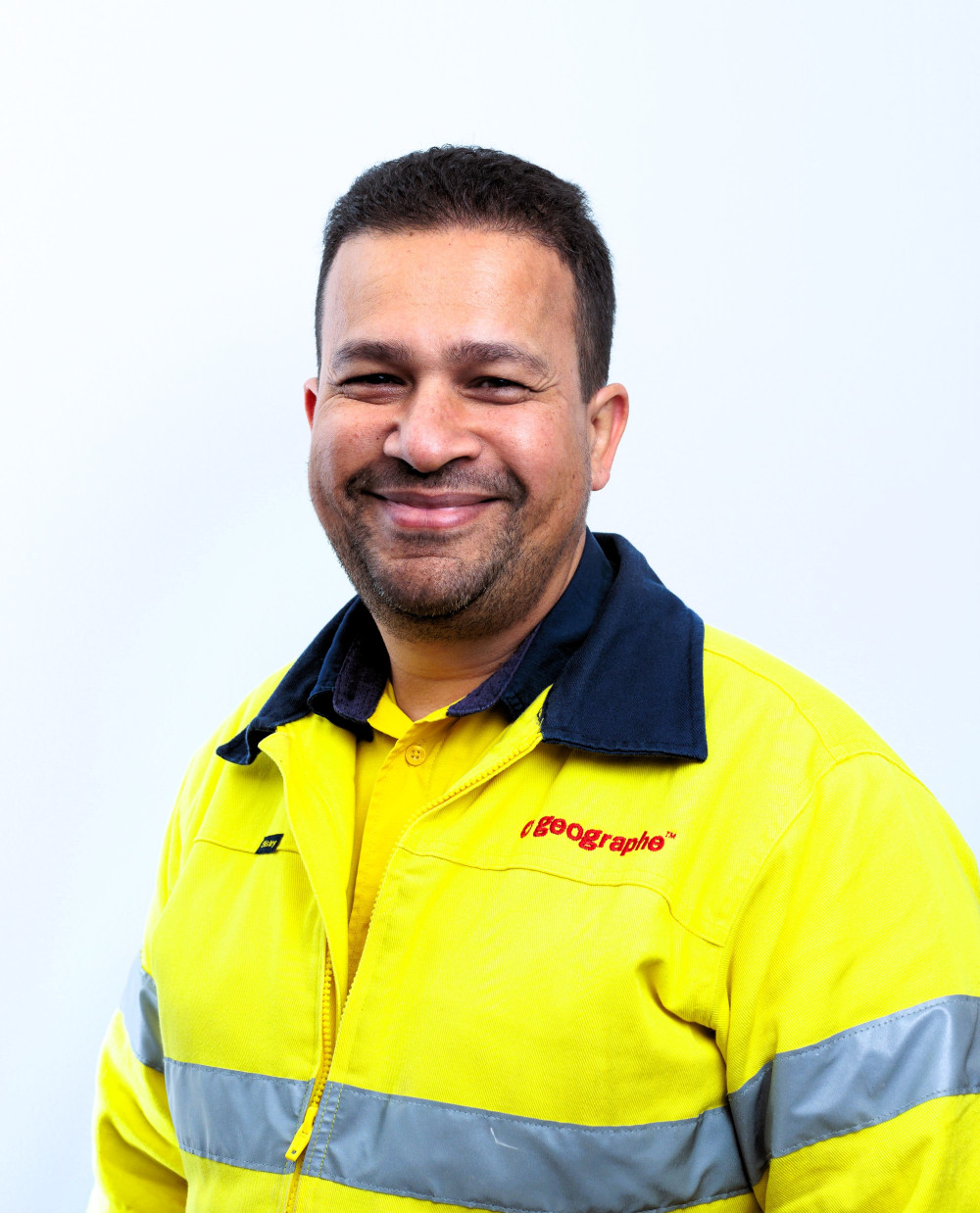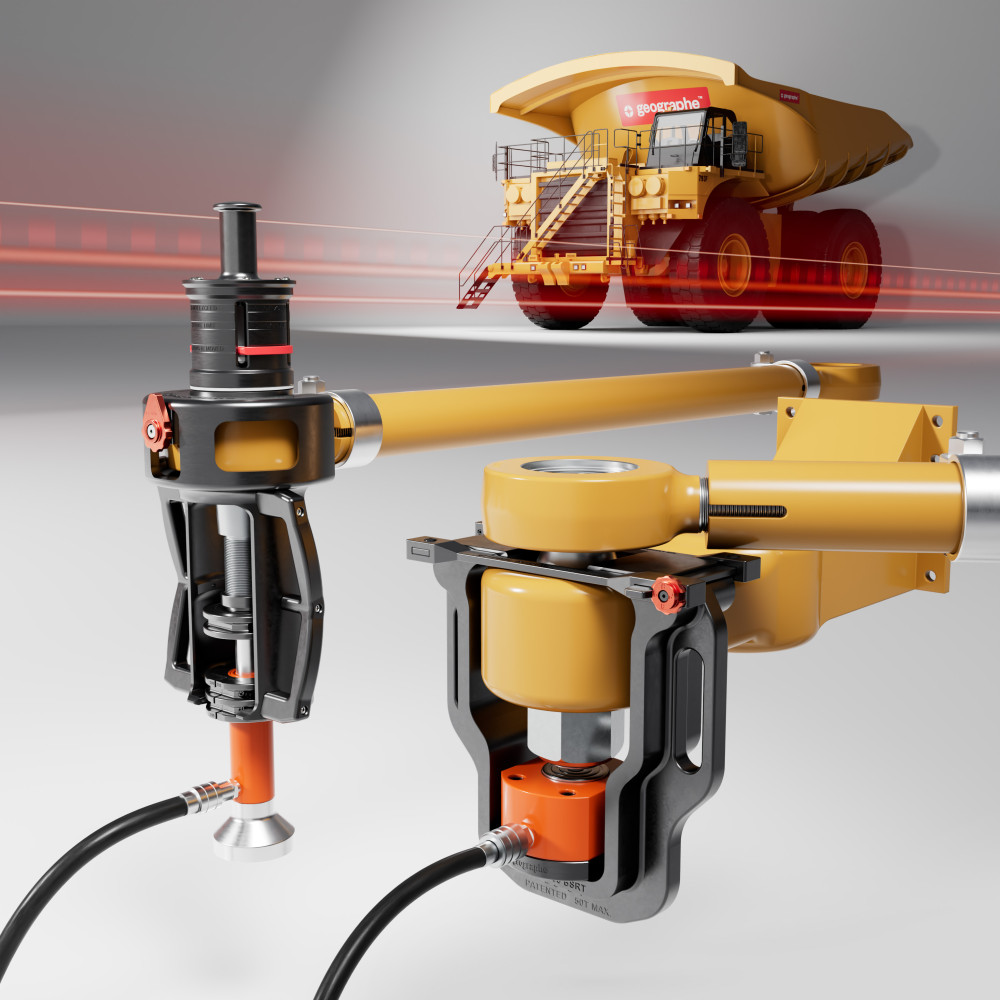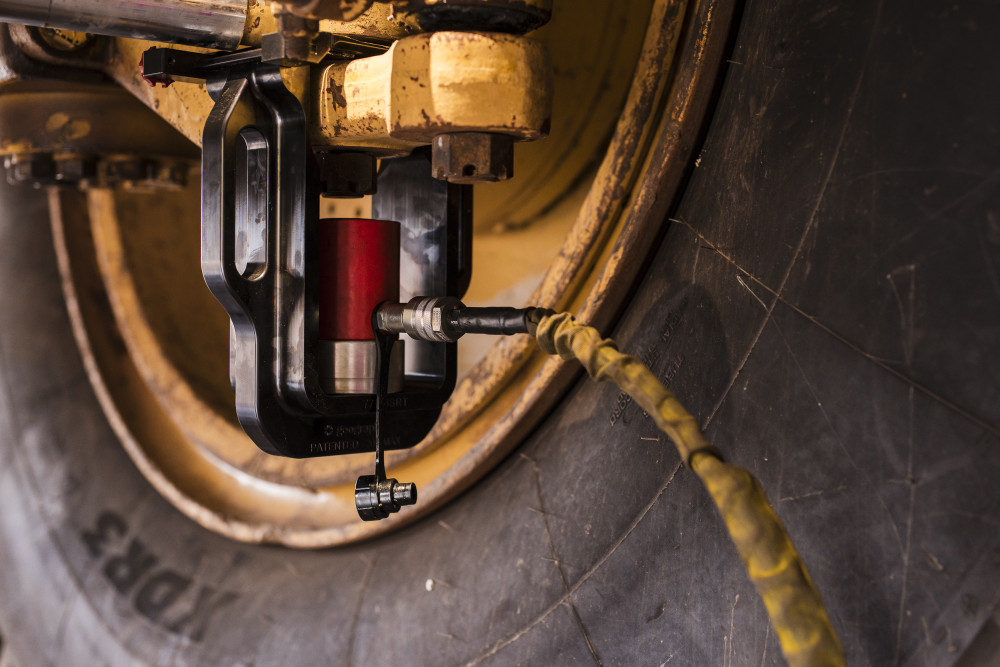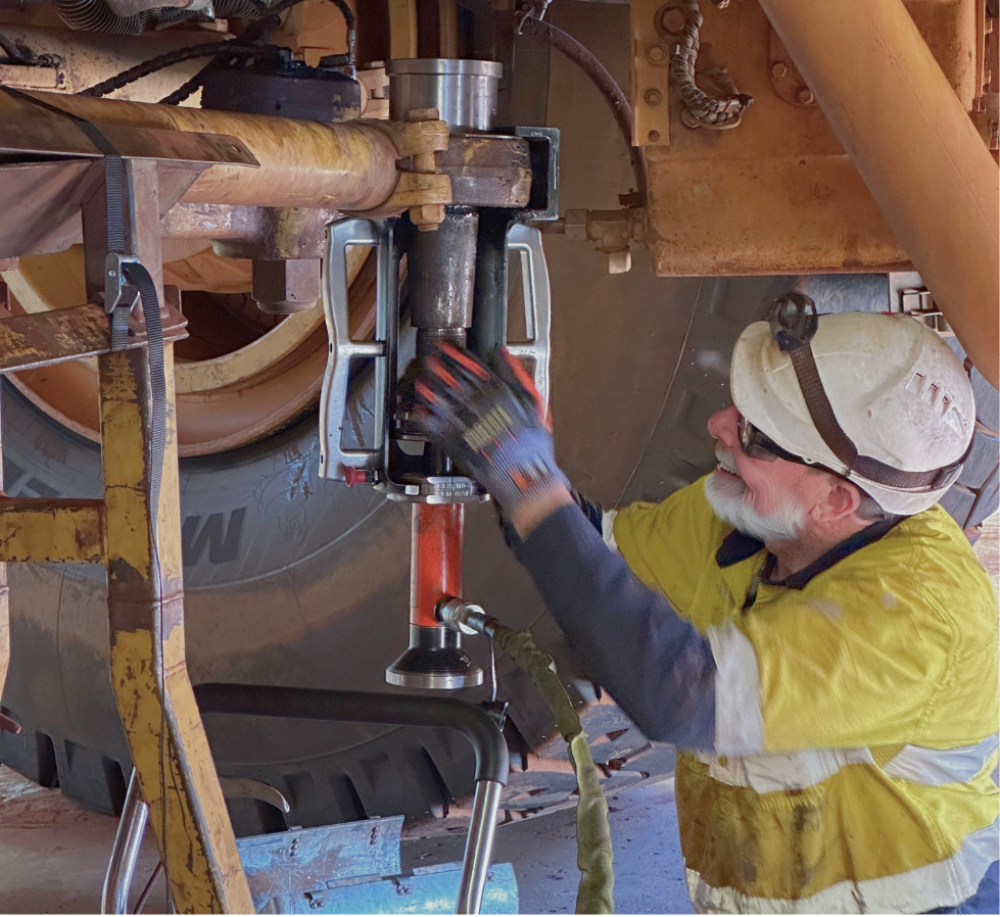Clever toolkit slashes hours, boosts safety and outsmarts old-school haul truck maintenance with smart, simple, site-proven solutions


, , , , , , , ,
,
,
In an industry where safety is non-negotiable and downtime is costly, one Western Australian firm is taking a precision approach to mine maintenance. Geographe, a Bunbury-based manufacturer of enhanced performance mining parts and specialised tooling, is turning frontline feedback into field-ready innovation - one bolt, bearing, and ball stud at a time.
At the centre of this transformation is Andre Duckitt, innovations project manager at Geographe, who has overseen the development of two new tools poised to raise the bar for haul truck maintenance across Australian mine sites: the second-generation Ball Stud Removal Tool (BSRT) and the Ball Stud Bearing Installation and Removal Tool (BSBIRT).
“The motivation behind these tools was really about listening to the maintainers,” Andre explained to The Rock Wrangler. “We’re committed to developing safer, smarter tooling and that starts with understanding the realities of the job.”

Rethinking the basics: Faster removal, lower risk
The original BSRT was already a step forward in haul truck maintenance, but the second generation, released earlier this year, has introduced a range of safety and usability upgrades based on direct site feedback.
“One of the biggest improvements is how we’ve secured the hydraulic cylinder to the main tool body,” said Andre. “It was possible in the first-gen version to accidentally dislodge the cylinder before pressurisation. That’s been eliminated.”
Another standout feature is the redesigned latch mechanism. The new system allows for tool attachment from both sides significantly reducing setup time and awkward manoeuvring in confined spaces under the truck.
But the most dramatic change isn’t in design - it’s in performance.
“The Caterpillar Haul Truck Ball Stud Removal Tool has reduced the time to remove ball studs from 12 hours per truck to just 1 hour,” noted a Truck Maintenance Superintendent from Fortescue Metals Group (FMG), Geographe’s development partner for the BSRT.
“The risk of damaging jacks has also been removed. This initiative represents a significant cost and time reduction while also improving safety for our maintainers.”

Addressing a silent risk: The hidden danger of bearings
Where the BSRT tackles time-consuming disassembly, the BSBIRT - still undergoing field testing - is designed to eliminate risk during bearing replacement on Caterpillar haul trucks, particularly on the 785, 789, and 793 models.
“The BSBIRT came about after a Tier 1 miner shared their frustrations with how difficult and hazardous it was to remove split shell bearings,” said Andre. “We designed a complete toolset that allows a single person to do the job safely and efficiently.”
Traditionally, bearing removal involves brute force techniques - hammers, heating, and liquid nitrogen - which pose well-documented risks to both personnel and equipment. The BSBIRT replaces these legacy methods with a modular, engineered solution that supports a consistent three-step process: removal, setting, and installation.
“By eliminating the need for hazardous methods, we’ve made the job safer and more predictable,” Andre explained. “It’s also allowed us to provide clear documentation and repeatable steps, which simplifies training and boosts consistency across shifts.”

Built for the trucks that do the heavy lifting
Both the BSRT and BSBIRT have been specifically developed to service Australia’s workhorse Caterpillar haul trucks - namely the 785, 789, and 793 series, which are widely used across the country’s iron ore and gold operations.
“We’ve focused on these three models because they make up the bulk of large-scale mining fleets here,” said Andre.
That next tool, as well as a new Steering Taper Repair & Inspection Kit (STRIK) for 789 and 793 models, is part of a broader tooling roadmap from Geographe aimed at enhancing maintenance safety and reducing unscheduled downtime across major fleets.

Real-world testing with a zero harm lens
Geographe has taken a deliberate, staged approach to validating its tools in the field starting with in-house bench tests, progressing through local shop trials, and culminating in on-site deployment at multiple mine sites in Western Australia.
“Our goal is zero harm,” said Andre. “That means every component has to work in real-world conditions reliably, safely, and repeatedly. We don’t cut corners, and we don’t release anything until we’re confident it adds value on site.”
That emphasis on field validation is especially critical when developing tooling for frontline maintenance personnel, who often work in high-pressure environments with limited time to resolve issues.
“We see ourselves as engineering partners, not just tool suppliers,” said Andre. “If a tool isn’t intuitive and safe for someone to use during a night shift in 40-degree heat, then it’s not ready.”

Looking ahead: What’s next from Geographe
In addition to the newly released 2nd generation BSRT and STRIK, Geographe is also preparing to launch a new suite of Enhanced Performance parts for Caterpillar haul trucks, including upgraded A-Frame bearing kits. While Andre couldn’t yet speak to several other projects currently under patent consideration, he hinted that more field-driven innovations are on the horizon.
“All our current developments including unannounced ones stem from operator insights,” he said. “We’re not innovating in isolation. We’re responding to specific pain points that operators, maintainers, and planners are facing every day.”

A smarter, safer future for maintenance
At a time when mine operators are seeking every advantage to improve productivity while maintaining rigorous safety standards, Geographe’s tooling innovations highlight the impact of user-driven design.
By simplifying processes, eliminating high-risk legacy methods, and enabling consistent, repeatable maintenance outcomes, the company is delivering tools that go beyond compliance - they deliver confidence.
“Ultimately, we want our tools to empower the people using them,” said Andre. “If we can make the job safer, faster, and easier, we’re not just improving maintenance - we’re helping people go home safe, every day.”
